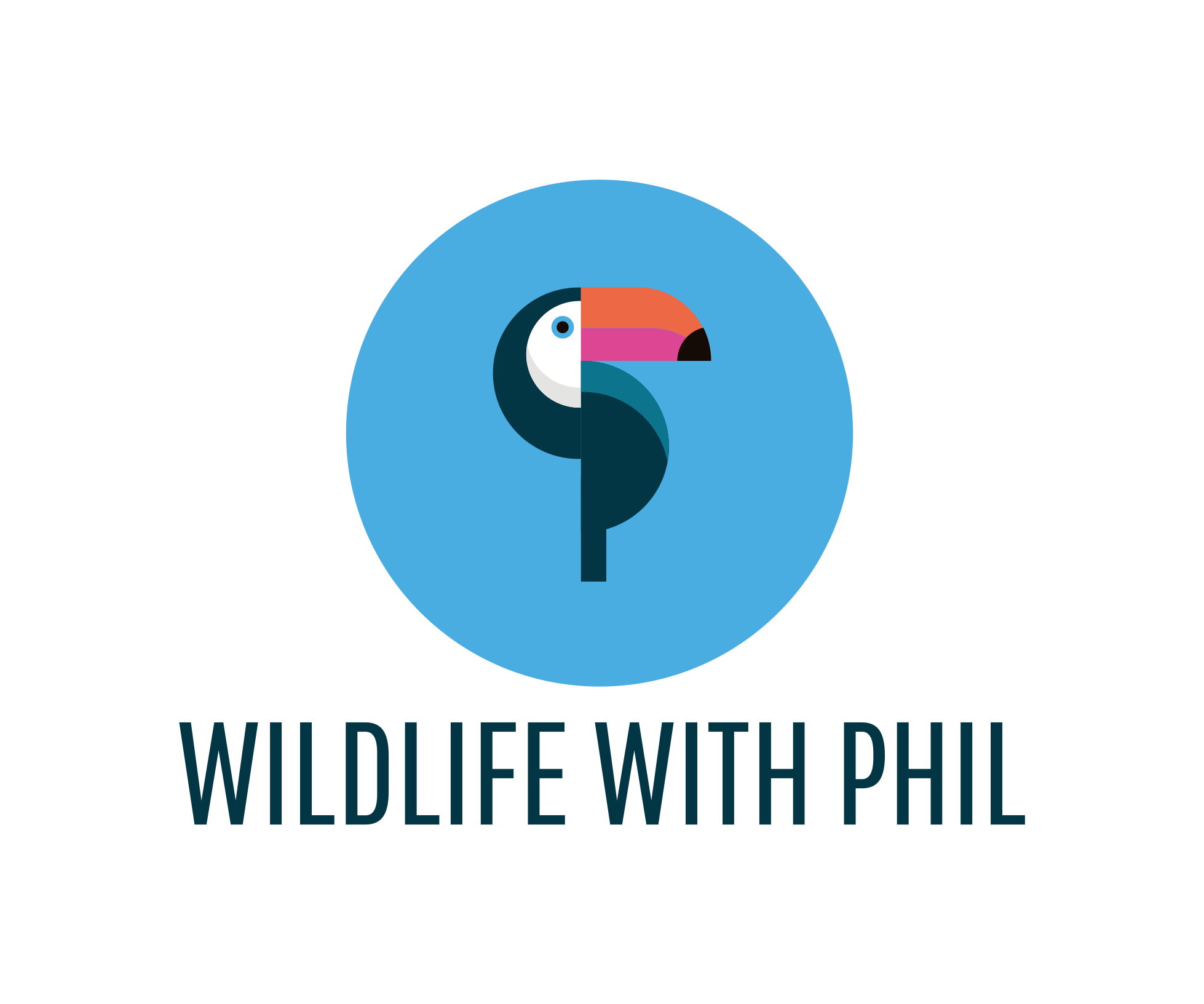
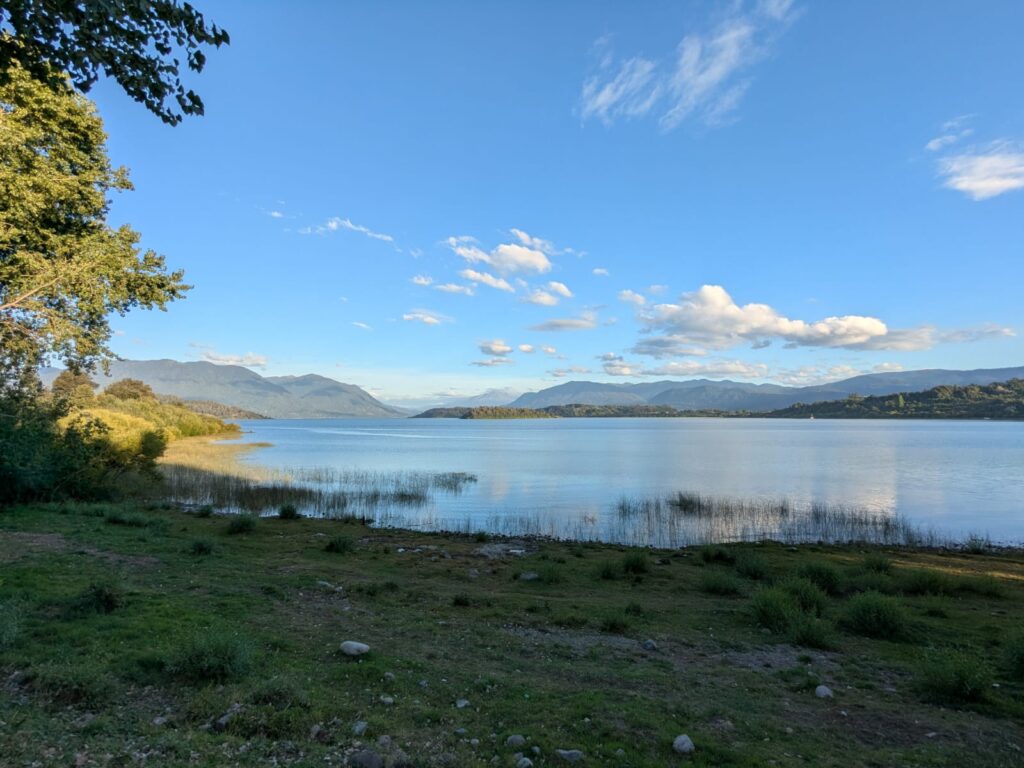
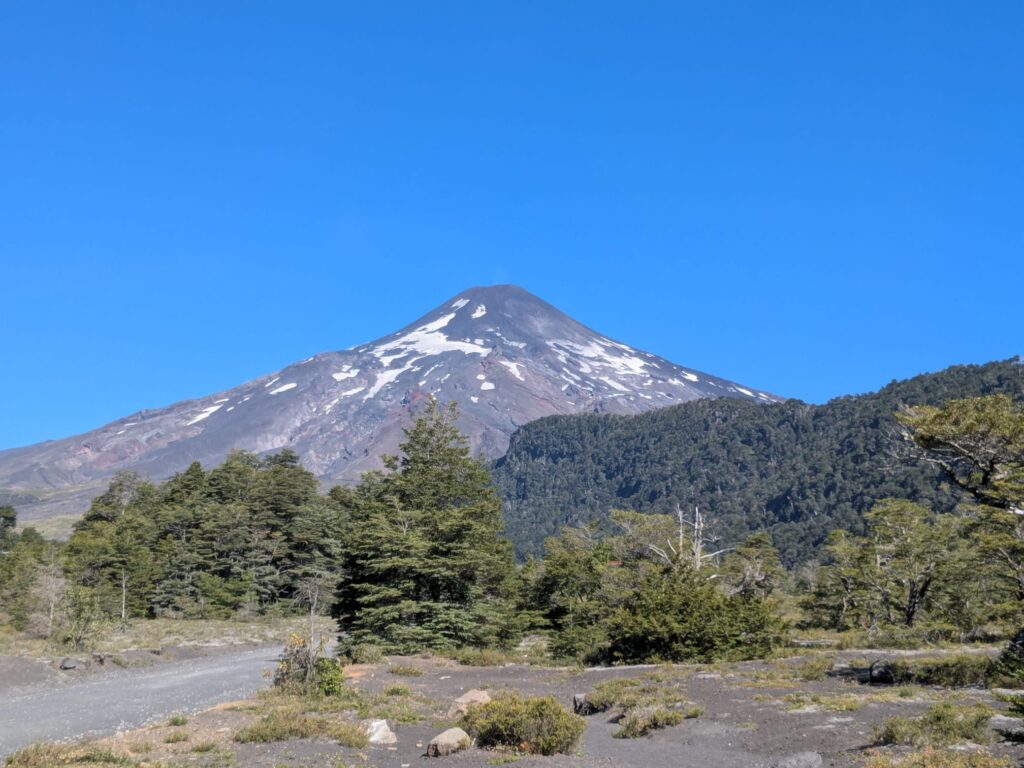
Heading northwards from the island of Chiloé, we arrived at the southern end of Chile’s Lake District (El Region de Los Lagos) around mid-March. Within this region, we explored three stunning national parks, unlike anything we’d seen before – Puyehue, Villarica and Conguillio.
In order to avoid writing a blog as long as an academic thesis, here I am going to only going to discuss our experiences in Puyehue National Park and Villarica National Park. If by the end of the blog you still want to hear more about volcanoes and lava, click here for the blog on Conguillio National Park!
Puyehue National Park
Puyehue National Park, like many others within Chile’s Lake District, has a namesake volcano – Volcán Puyehue – which dramatically erupted in 1960 following an earthquake. Other than this, this national park is well-known for its thermal baths. Upon arrival at the thermal springs, we realised that they were a lot busier and more expensive than we were expecting, so we opted to give them a miss and instead drove to the quieter Anticura section of the park in search of a nice hiking trail. There are two entrances to the Anticura section, one which is managed by CONAF (Chile’s National Forest Corporation) and another which is privately owned. It turned out that the CONAF workers were on strike that day, and so we paid a small entrance fee of $4,000 Chilean pesos per person and entered the privately-owned section.
Ed was feeling a little under the weather that day and so a short walk was on the cards. We chose to follow a trail that passes two waterfalls called Salto de Indio and Salto de la Princesa. Both waterfalls were very pretty and we enjoyed an easy walk through beautiful Valdivian temperate rainforest, even briefly spotting some kind of owl in the trees. In particular, we enjoyed watching a confident little bird, a black-throated huet-huet, digging in the dirt to look for food. We found the digging action of this charismatic bird to be very amusing as it involved a rather comical bum shuffle. I only wish that I had taken a video to better remember it by!
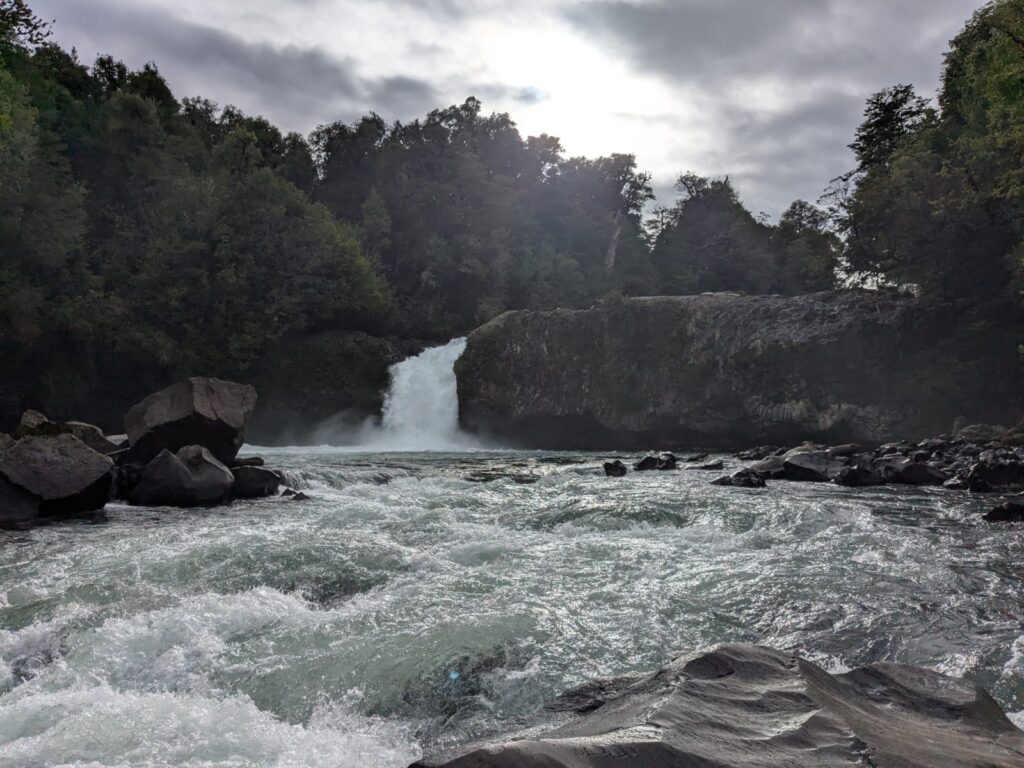
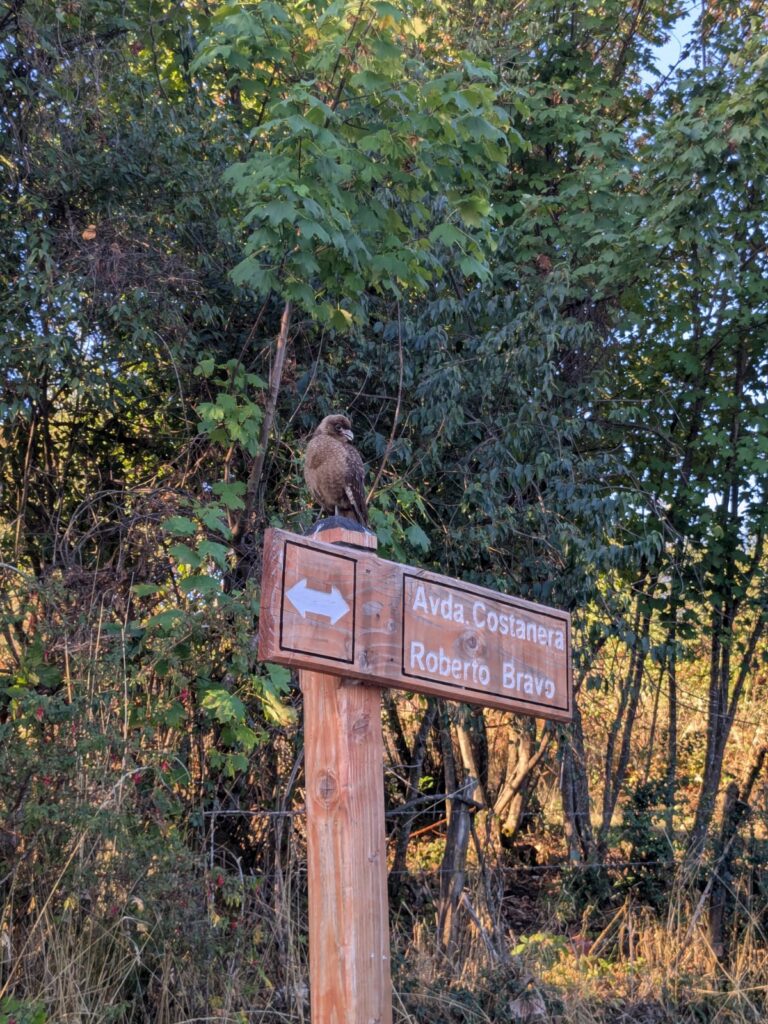
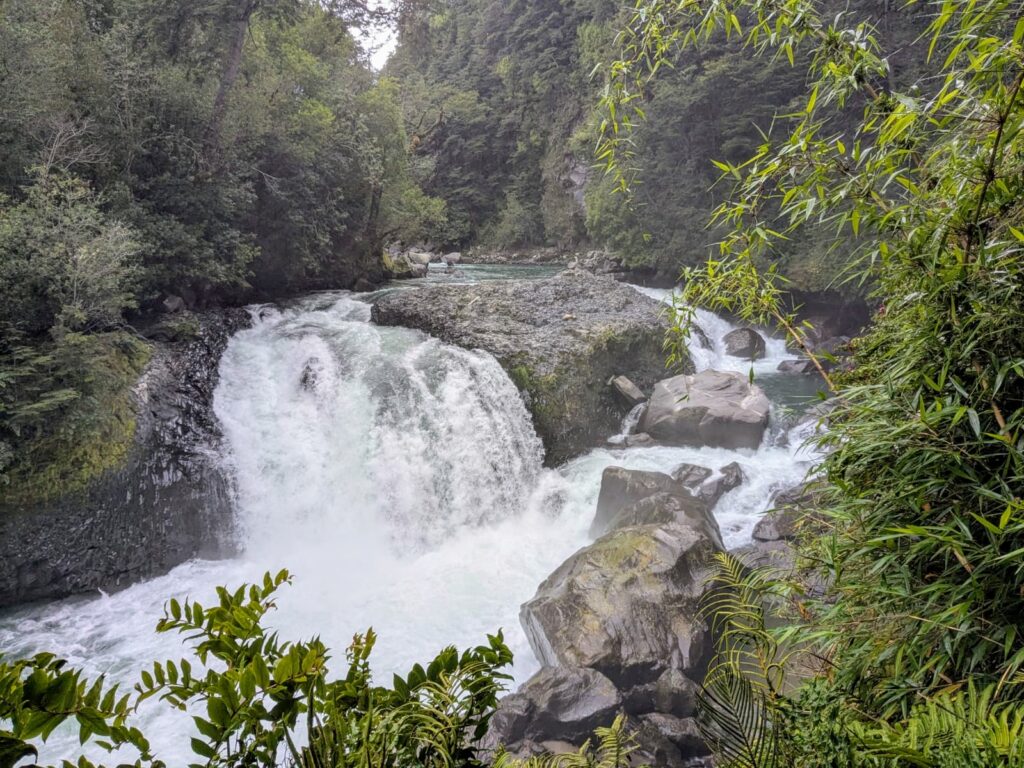
Villarica National Park
After leaving Puyehue National Park, our next stop within Chile’s Lake District was the beautiful Villarica National Park, just outside of the town of Pucón. This national park centres around one of Chile’s most active volcanoes, Volcán Villarica, which erupted as recently as 2015. As described in Lonely Planet, the number one thing to do in Pucón is to hike to the volcano’s summit1. However, we had read that the trail is often very busy so we opted for another hike called the ‘Sendero Mirador los Crateres’.
The final section of the gravel access road leading to the official start-point for the trail was very steep and uneven. It was not particularly suitable for 2WD vehicles – let alone a large van! We instead parked at a car park at a viewpoint named Mirador Volcán Villarica, approximately 4 km from the start point. From there we took a trail roughly parallel to the access road, through areas of volcanic gravel and mixed lenga-coigüe forest to reach the starting point.
Sendero de los Crateres
From the starting point of the Sendero de los Crateres, we hiked initially over more volcanic rock before entering a large tract of mixed lenga-coigüe forest, within which we remained for most of the hike. This pretty forest, filled with wild fuchsias and native bamboo, is home to a range of species, including the tiny pudu deer, South American foxes, and even pumas! Our wildlife encounters on the day were limited to (hundreds of) colourful lizards and a variety of birds. We were still pretty happy with that!
Within the forest we heard the pretty songs of the white-crested elaenia and Austral thrush. We saw white-throated tree runners running up and down trees (funnily enough), as well as a Chilean flicker, a striped woodpecker, southern house wrens and Chilean swallows. We also enjoyed seeing more green-backed firecrown hummingbirds busily flitting between flowers. These little birds had become our welcome constant companions since we re-entered Chile to meet the Careterra Austral.
Our most memorable bird sighting of the hike was a group of four Magellanic woodpeckers. These birds are notable not only for their large size, but mainly for their impressive bright red mohawks! We saw this group of woodpeckers (which is rather oddly known as a ‘descent’) pecking away at the deadwood on large trees. We noticed that almost all of the large trees appeared to have significant amounts of deadwood high up in their canopies, which we can only assume is the result of damage caused by previous volcanic eruptions.
The trail climbed gradually through the forest to eventually open out at the stunning Mirador Fillkungüé. From this viewpoint we could see across the Zanjón Seco Valley and the Correntoso Valley, as well as the Caburga and Huilipilún lakes and the peaks of two further volcanoes – Llaima and Sollipulli2.
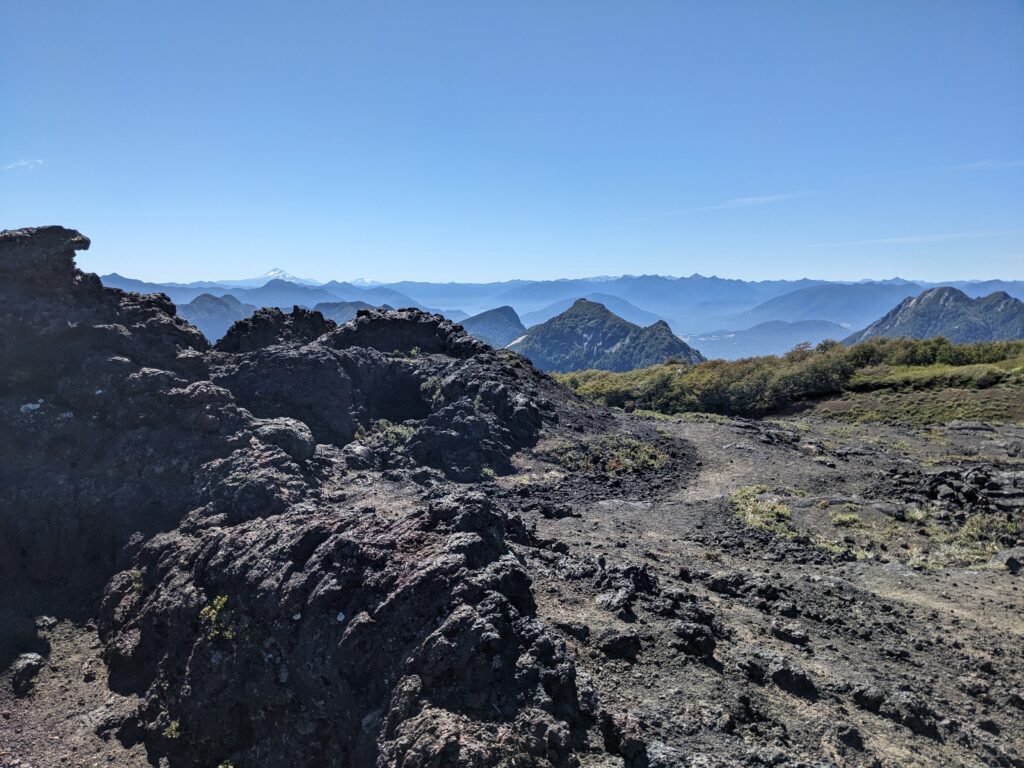

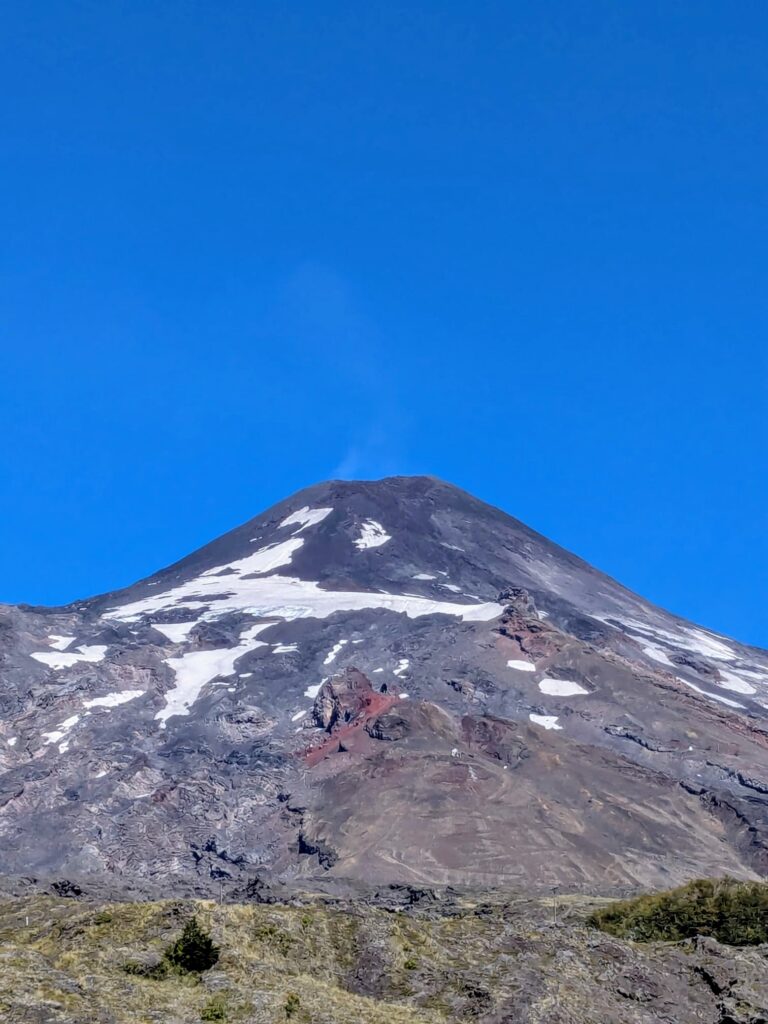
The trail continued beyond the viewpoint directly out onto a large lava field. The lava field is notable for containing a large number of craters (hence the name of the trail), created as a result of lava being pushed upwards by the hot gases, cooling and solidifying, and then collapsing. It was quite exciting to walk on lava deposited as recently as 2015. It was certainly a novel experience, especially with Volcán Villarica gently smoking just in front of us!
As Biologists, what we found really cool was how the lizards dotted about on the volcanic rock were almost entirely black/dark grey, compared with the largely green/blue lizards we had been seeing in the forest. Other than colour, they looked extremely similar and so we think they must have been the same species. If we are correct in our hypothesis, this example of rapid evolution to adapt to survive in a new environment (phenotypic placticity) was pretty cool to see!
The hike was circular, heading back down through a larger section of the lava field before returning into the forest. As we continued to walk we saw black and turkey vultures flying overhead, scouring the land for food. Returning to the van, we enjoyed a relaxing evening alongside a couple of other campers, a couple of friendly stray dogs and a few visiting crested and chimango caracaras. In the forests beyond we enjoyed listening to the now-recognisable songs of the chucao tapaculo and brown-throated huet-huet. It was a beautiful clear evening. We had incredible views of the smouldering volcano, the stars and the milky way.
Overall, we found Villarica National Park to be an incredible place to visit, and the Sendero de los Crateres is certainly one gem of a hike!
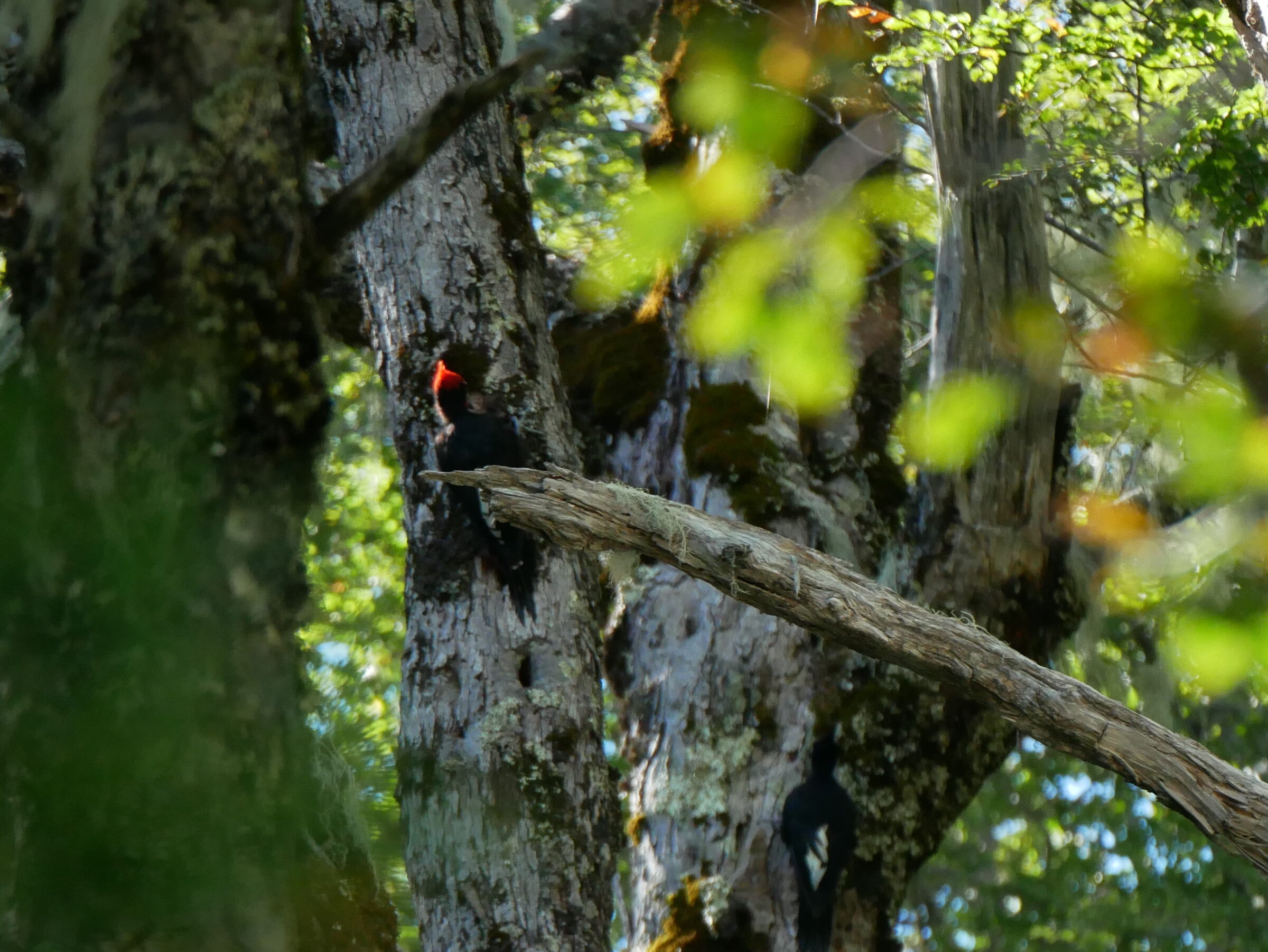
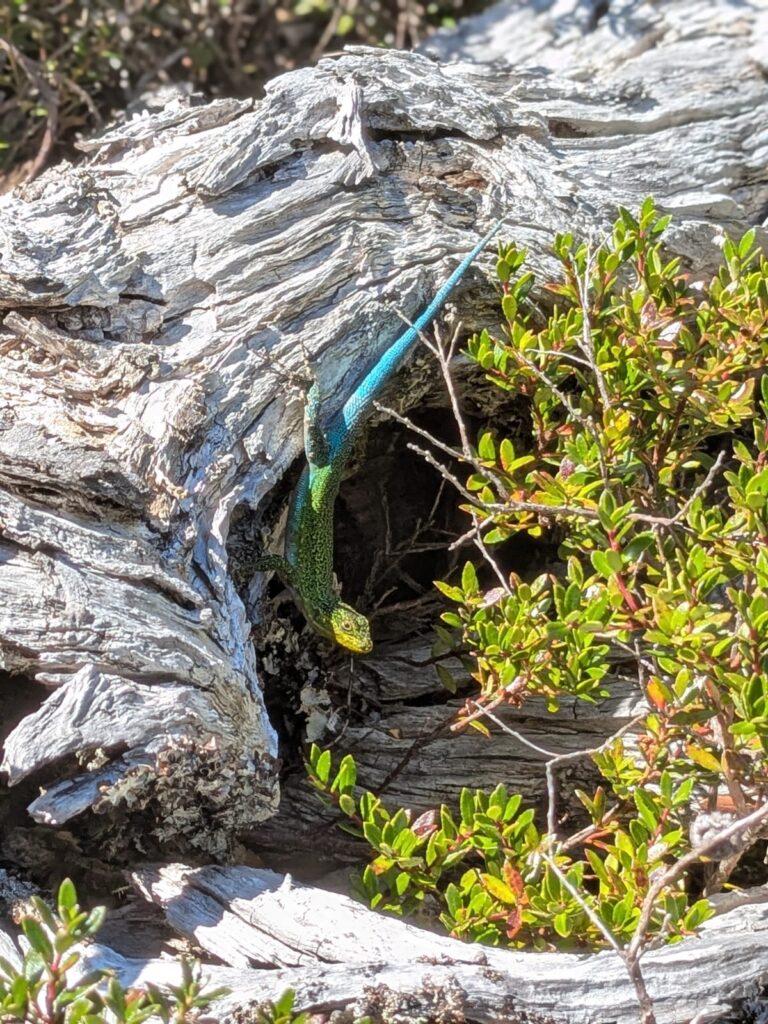
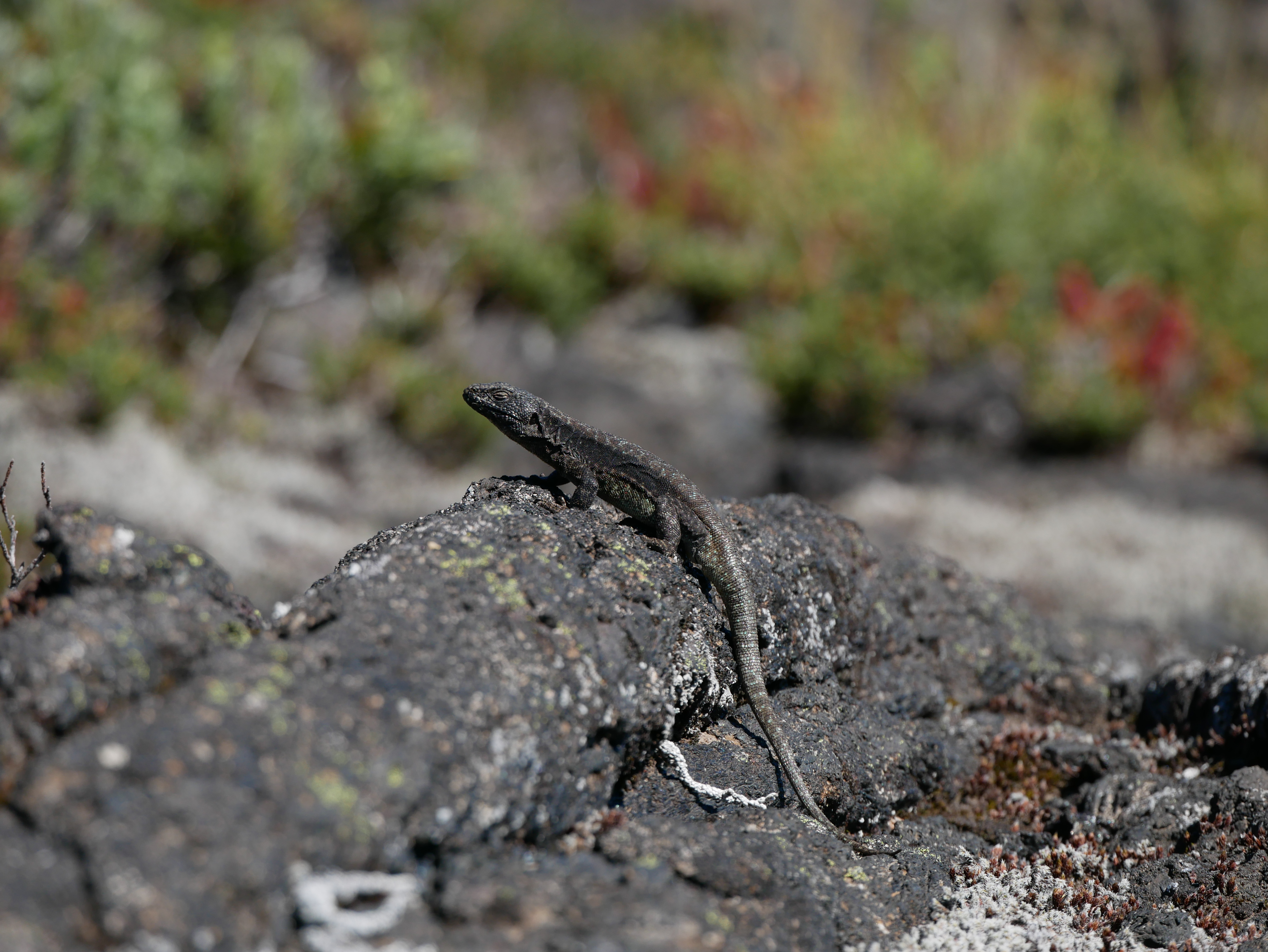
How to get there
- To reach the Anticura section of Puyehue National Park, from Ruta 5, take Ruta 215 heading East. This road takes you straight to the entrance.
- To reach Sector Rucapillan within Villarica National Park, take Ruta S-887 from the town of Pucón straight to the trailheads. Pucón sits along Ruta 199, which originates from Ruta 5, one of the main roads through Chile.
Sources
- Lonely Planet. (2022). Lonely Planet South America. Lonely Planet
- All Trails: https://www.alltrails.com/es/ruta/chile/araucania/mirador-los-crateres
